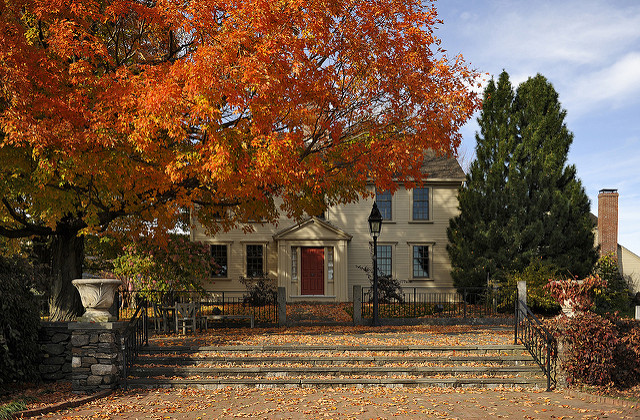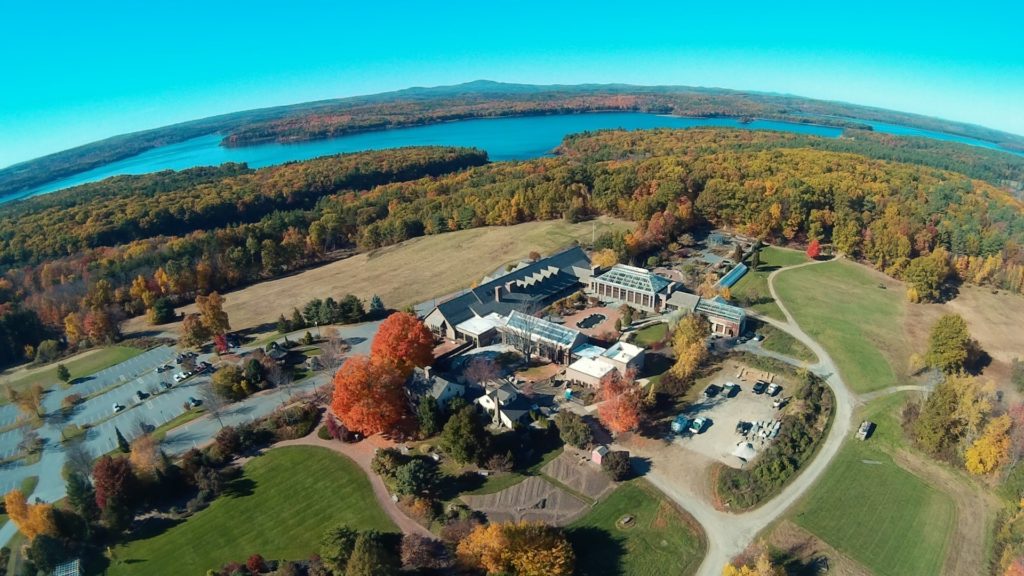
An aerial view of New England Botanic Garden at Tower Hill.
New England Botanic Garden at Tower Hill in Boylston, Massachusetts, has a long history with deep roots in central Massachusetts.
The landscape, including the drumlin our garden sits upon today and the valley below, was carved when the glaciers of the last ice age retreated some 10,000 years ago. Indigenous people, including the Nipmuc tribe, frequented the Central Massachusetts area in pre-Colonial times. Boylston was first settled by Europeans around 1706 and incorporated in 1786. The earliest deed we have discovered for the current property dates to 1718, when George Brown bought the property for his son Josiah. Elijah Maynard bought the property in 1727.
We don’t have to look far to find clues of what life here was like in the 18th century, as our Farmhouse dates back to around 1740. Historically recognized as the Elisha Maynard House, the structure, which represents a well-preserved example of a Colonial to Federal period residence, today contains administrative offices for New England Botanic Garden at Tower Hill employees. Stone walls from that era crisscross the land. In the mid-1800s, the Fitzgerald family owned the property making a living off of selling dairy cows and farming equipment.
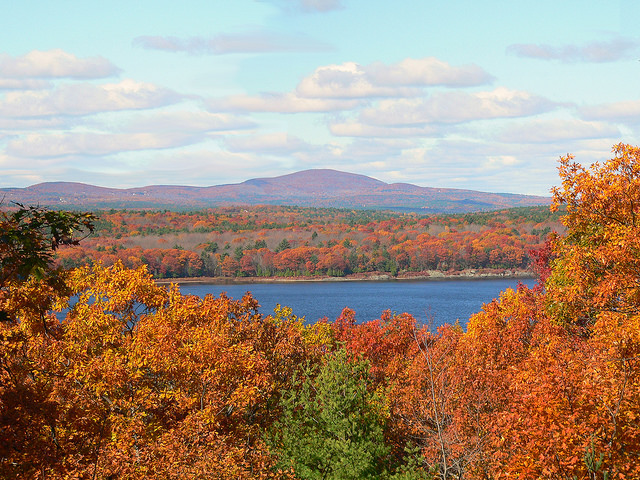
Wachusett Mountain seen from the New England Botanic Garden at Tower Hill summit.
When Henry David Thoreau’s visited Wachusett Mountain in 1842, he might have seen our hill in Boylston in the distance, cleared of trees, animals out to pasture. “On every side, the eye ranged over successive circles of towns, rising one above another, like the terraces of a vineyard, till they were lost in the horizon,” wrote Thoreau in a Walk to Wachusett. Today visitors often gaze back at at the majestic Wachusett Mountain, just 18 miles northwest of our garden.
The same year of Thoreau’s walkabout to the area, the Worcester County Horticultural Society, which today owns and operates New England Botanic Garden at Tower Hill, was established, making the Society one of the oldest active horticultural groups of its kind in the United States. In 1851, the Society’s first headquarters was built in downtown Worcester on Front Street and weekly summer shows highlighted the produce and gardens of the thriving agricultural community. The crops were so robust and varied that in 1855 one exhibitor alone showed more than 200 varieties of pears. The Society itself continued to grow and by 1867, the annual exhibition had to be moved. The Society was very active in Worcester for more than 100 years, sponsoring plant and produce shows with an emphasis as much on agricultural as flowers.
Meanwhile, in the late 1800s, plans to create a reservoir in a valley that included part of Boylston brought engineers to the summit of what is now our property where they built a tower to survey the area. The Wachusett Reservoir, supplying drinking water to millions of eastern Massachusetts residents, was filled in 1908. In the years that followed, the land became referred to as New England Botanic Garden at Tower Hill and the view below offered a dramatic perspective of the second largest body of water in Massachusetts.
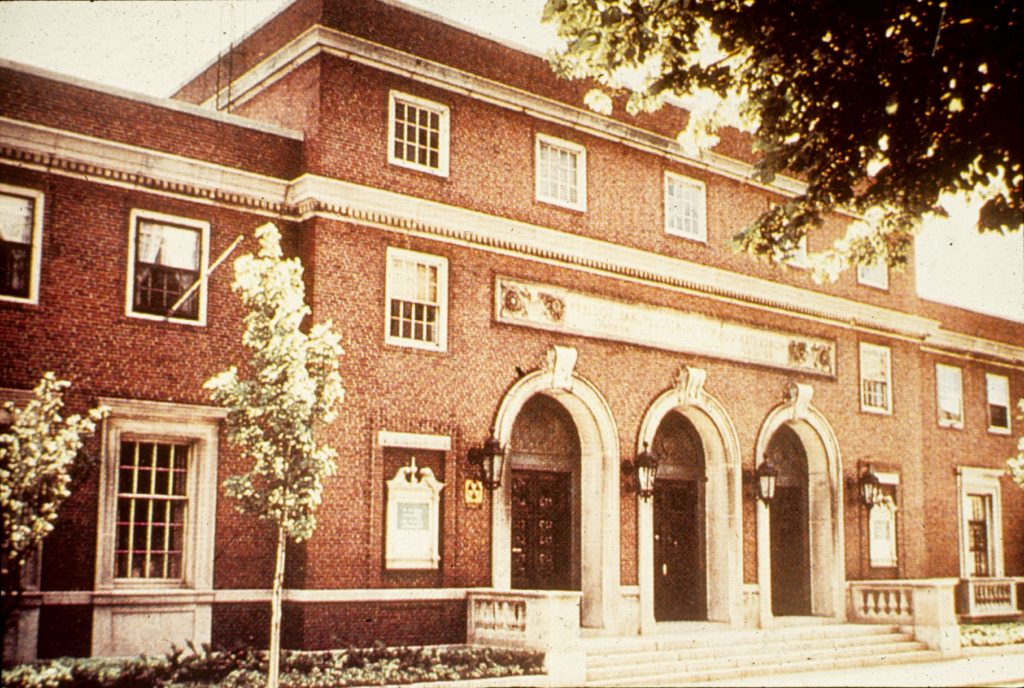
Horticultural Hall in Worcester
While farmers toiled at New England Botanic Garden at Tower Hill in Boylston, by 1928, the Society had outgrown its Front Street property in Worcester. Land was purchased to build a new headquarters, Horticultural Hall, at 30 Elm Street in Worcester. But by the the mid-20th century the estate gardens that had supported Society’s exhibitions dwindled and exhibitions themselves decreased.
Meanwhile, in 1946, Maynard and Winona Carter purchased New England Botanic Garden at Tower Hill’s 130 acres, which included the farmhouse and a five-bay barn built around 1800, from the Fitzgeralds and operated the property as a gentleman’s farm, one of two that they owned.
In 1983 the Society turned its sights toward cultivating gardens. In 1986, they purchased Tower Hill Farm from the Carter family. The Worcester Historical Society subsequently took over the Elm Street building.
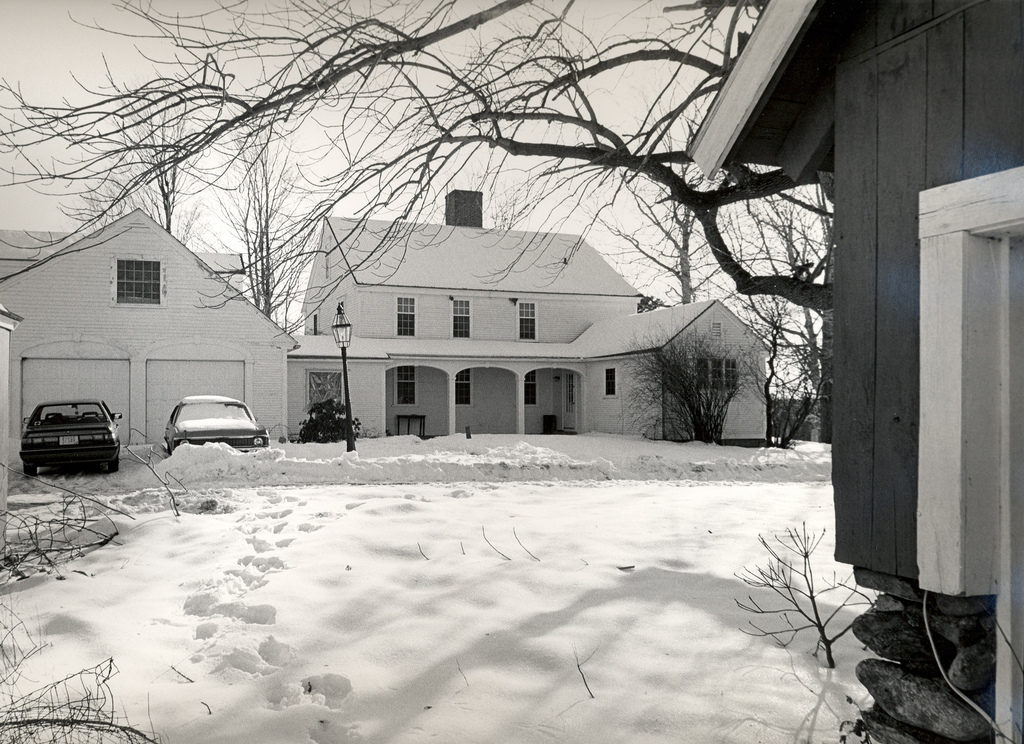
Farmhouse circa 1986.
After its purchase of the farm, the Society set to work with Environmental Planning and Design of Pittsburgh, Pennsylvania, to produce a 50-year Master Plan for the garden, which would guide its development in the years to come.
New England Botanic Garden at Tower Hill continues to do more than salute its agrarian history. We preserve 119 cultivars of pre-20th century apples, known as The Davenport Collection, provide programs to support home gardeners, and maintain a thriving vegetable garden.
As of 2019, New England Botanic Garden at Tower Hill includes 171 acres of woodland trails, formal gardens, and educational facilities.
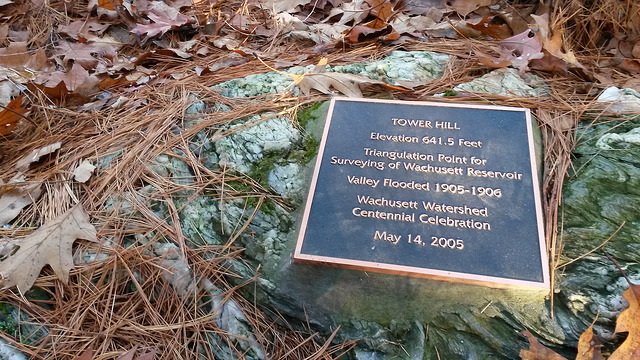
View key dates in this historical timeline of the Worcester County Horticultural Society.

